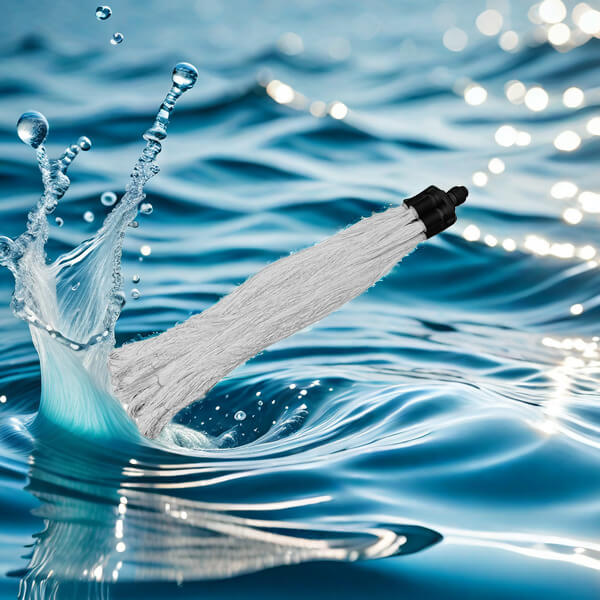Process of Coal Mine Sewage Treatment Plant
Introduced the sources of coal mine wastewater and its impact on the environment, emphasizing the necessity of wastewater treatment. Next, the basic composition of coal mine wastewater treatment plants was analyzed, including physical, chemical, and biological treatment processes. Subsequently, the application of modern technology in sewage treatment and how these technologies can improve treatment efficiency and water quality were discussed. The article also explores the potential of coal mine wastewater treatment plants in resource recovery, such as the recovery of water resources and valuable minerals. Analyzed the management and policy support of coal mine wastewater treatment plants, emphasizing the importance of sustainable development. Through a comprehensive analysis of coal mine wastewater treatment plants, this article aims to provide reference for research and practice in related fields.
The sources and impacts of coal mine wastewater
Coal mine wastewater mainly comes from coal mining, coal washing, and mine drainage processes. These sewage usually contain a large amount of suspended solids, heavy metals, and other harmful substances. If discharged directly without treatment, it will cause serious pollution to the surrounding water bodies. Polluted water bodies not only affect the ecological environment, but may also pose a threat to human health, leading to water scarcity and ecological imbalance.
Improper treatment of coal mine wastewater may also lead to soil pollution and air pollution. Harmful substances in sewage infiltrate into groundwater through soil infiltration, and long-term accumulation can have an impact on crops, thereby affecting food safety. The construction and operation of coal mine sewage treatment plants are particularly important.
With the increasingly strict environmental regulations, coal mining enterprises are facing greater environmental pressure. The compliant treatment of coal mine wastewater is not only a legal requirement, but also an important manifestation of corporate social responsibility. Establishing an efficient coal mine wastewater treatment plant has become an urgent task.
Basic composition of coal mine sewage treatment plant
Coal mine wastewater treatment plants typically consist of multiple treatment units, including pretreatment, physical treatment, chemical treatment, and biological treatment. Pre treatment mainly involves removing large particulate matter from wastewater to prevent blockage of subsequent treatment equipment. Physical processing usually uses methods such as precipitation and filtration to remove suspended solids and impurities through physical means.
Chemical treatment is the process of adding chemicals to promote the precipitation or oxidation of harmful substances in wastewater, thereby reducing the concentration of pollutants in the water. Common chemical agents include coagulants and oxidants. Biological treatment utilizes the metabolic activity of microorganisms to degrade organic matter in wastewater, achieving the goal of purifying water quality.
Modern coal mine sewage treatment plants may also be equipped with advanced monitoring systems to achieve real-time monitoring and data analysis of the entire sewage treatment process. This intelligent management not only improves processing efficiency, but also enables timely detection and resolution of potential problems, ensuring the stability and reliability of sewage treatment.

The Application of Modern Technology in Wastewater Treatment
With the development of technology, more and more coal mine wastewater treatment plants are adopting advanced treatment technologies. For example, membrane separation technology is widely used in sewage treatment processes. Through selective filtration of membranes, small particles and dissolved substances in water can be effectively removed, improving water quality.
The oxidation-reduction reaction technology has also been applied in coal mine wastewater treatment plants. This technology can quickly remove heavy metals and organic pollutants from wastewater through chemical reactions, reducing their toxicity. Compared with traditional processing methods, modern technology has significantly improved processing efficiency and effectiveness.
The introduction of artificial intelligence and big data analysis technology has made the management of sewage treatment plants more scientific and efficient. By analyzing historical data, managers can optimize processing procedures, predict equipment failures, reduce operating costs, and improve overall processing capabilities.
The potential of resource recycling
Coal mine sewage treatment plants are not only places for sewage treatment, but also have important resource recovery functions. Through advanced processing techniques, the treated water can be recycled to meet the needs of coal mine production and surrounding domestic water. The recycling and utilization of water resources not only reduces the pressure on water resources, but also lowers the operating costs of enterprises.
Coal mine wastewater may contain valuable minerals and chemicals, such as metal elements such as iron and aluminum. Through appropriate processing techniques, these minerals can be recovered and reused, forming a closed-loop utilization of resources. This not only improves the efficiency of resource utilization, but also creates additional economic value for the enterprise.
The resource recovery potential of coal mine wastewater treatment plants also helps promote the development of circular economy. By combining sewage treatment with resource recycling, the environmental impact of the coal mining industry can be effectively reduced, achieving sustainable development goals.
Management and Policy Support
The effective operation of coal mine wastewater treatment plants relies on scientific management and policy support. Enterprises need to establish a sound management system, clarify the responsibilities of each position, and ensure that there is a dedicated person responsible for every aspect of sewage treatment. Regular training to enhance employees’ professional skills and environmental awareness is an important measure to ensure the smooth operation of sewage treatment plants.
Policy support in coal mine wastewater treatment is also crucial. By formulating relevant regulations and standards, clarifying the limits and treatment requirements for sewage discharge, coal mining enterprises can effectively strengthen the construction and operation of sewage treatment facilities. Enterprises can also be encouraged to adopt advanced sewage treatment technologies through financial subsidies and technical support.
